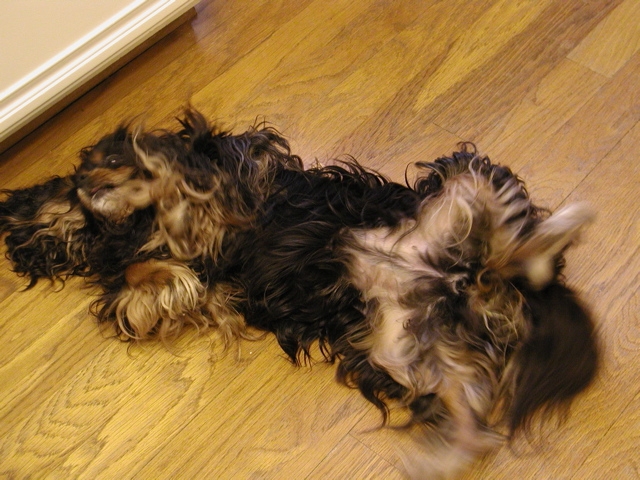Roll over is a classic trick that is always a crowd pleaser! This is a more challenging trick, especially for dogs with narrow bodies. Your dog will have to utilize his core muscles to complete the move. That’s good exercise for him.
Because of poor coordination on my part, I don’t usually use a clicker to teach roll over, but you can easily follow the steps using one if that is your dog’s favorite learning method.
Start with your dog in a down. Use a treat to draw his head back toward his hip, letting him eat the treat once his head is facing backward. Don’t reward if he gets up. Repeat a few times, starting to draw the treat up over his back a little. At this point he should naturally roll onto his side. Enthusiastically praise and reward him.
Dog’s bodies tend to follow wherever their heads go. Use a treat to lead your dog’s head around so that he now rolls onto his back and then his opposite side. Praise a lot as he completes the roll! How exactly you move your treat will vary from dog to dog based on their individual conformation.
Repeat luring through the roll a couple times. It will be awkward at first, but get smoother as your dog figures out how to move his body to do a proper roll.
Once he is rolling pretty well, you can introduce your command. Say, “Roll over!” (or “Bang!” or “Play dead!”) before you start to lure him into the roll. Gradually start to give him less and less help until he is rolling on his own with just your voice command and a small hand signal.
Most dogs are better at rolling in one direction than the other. You can allow your dog to always roll his preferred direction, or you can teach him to roll both ways for a balanced workout.
Have fun teaching your dog!

This article was reviewed/edited by board-certified veterinary behaviorist Dr. Kenneth Martin and/or veterinary technician specialist in behavior Debbie Martin, LVT








